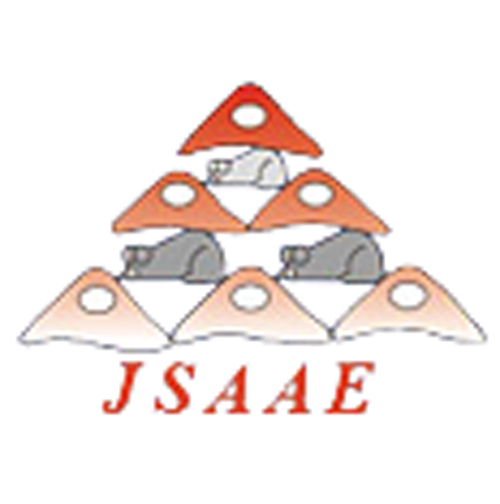Original paper
DEVELOPMENT OF AN IN VITRO CELL TRANSFORMATION MODEL IN SYRIAN HAMSTER EMBRYO CELLS FOR CARCINOGEN DETECTION AND MECHANISTIC STUDIES
R.A. LEBOEUF, G.A. KERCKAERT, M.J. AARDEMA AND D.P. GIBSON
The Procter & Gamble Company, Miami Valley Laboratories
AATEX 1(2):60-64
Abstract
Results from studies demonstrating enhanced multi-stage neoplastic transformation of Syrian hamster embryo cells cultured at pH 6.70 compared to ceils cultured in medium of higher pH are reviewed. These results are discussed in the context of the development of an in vitro cell transformation model for assessing the carcinogenic potential of chemicals.
DETECTION OF NON-MUTAGENIC CARCINOGENS USING CULTURED SYRIAN HAMSTER EMBRYO CELLS
TAKEKI TSUSUI1 AND J. CARL BARRETT2
1Department of Pharmacology, School of Dentistry at Tokyo, The Nippon Dental University, 1-9-20, Fujimi, Chiyoda-ku, Tokyo 102, Japan; 2National Institute of Environmental Health Sciences, P. O. Box 12233, Research Triangle Park, NC27709, U.S.A
AATEX 1(2):65-73
Abstract
The Syrian hamster embryo (SHE) cell transformation assay has a high predictive value (> 90 %) for the detection of carcinogens, including a number of non-mutagenic carcinogens”. To validate the assay further, we examined the abilities of 17 chemicals, which were negatived in the Salmonella/microsome assay, to induced morphological transformation of SHE cells.
SHE cells (2.5 x 106) in tertiary cultures were plated in 75 cm2 flasks and treated with the chemicals for 48 hours. Following trypsinization, the cells were replated on 100 mm dishes at 2,000-3,000 cells per dish and allowed to form colonies for 7 additional days. Eleven of the 17 chemicals tested are reported to be carcinogenic in rodents (no data are available for 4 chemicals). Ten of the eleven chemicals induced morphological transformation of SHE cells. SHE cell transformation responses for other chemicals by other investigators also showed a positive transforming activity in agreement with the rodent carcinogenicity data. These results indicate a good correlation between induction of SHE cell transformation and carcinogenicity, suggesting that the SHE cell assay system could be useful for mechanistic studies and detection of potential carcinogenic activity of non-mutagenic carcinogens. The possible involvement of genetic mechanisms in cell transformation by these chemicals will be discussed.
Key words: cell transformation, non-mutagenic carcinogens, Syrian hamster embryo cells.
MORPHOLOGICAL TRANSFORMATION INDUCED BY X-RAYS IN SYRIAN/ GOLDEN HAMSTER EMBRYO CELLS
KEIJI SUZUKI AND MASAMI WATANABE
Division of Radiation Biology, School of Medicine, Yokohama City University, Yokohama 236.
AATEX 1(2):74-78
Abstract
We investigated the induction of morphological transformation in Syrian/golden hamster embryo cells irradiated with X-rays. While the frequency of morphological transformation increased steeply at lower dosey (0-2 Gy), its increment became smaller with doses above 2 Gy. Compared with morphological transformation, the expression of mutation required an expression time more than 5 days and the induction curves for both phenotypes were different.
A large fraction of morphologically transformed colonies (about 80%) could be cloned with the use of feeder layer cells. Only the progeny of these clones expressed malignant phenotypes, such as an anchorage-independence and tumorigenicity under the skin of nude mice.
These results suggested that different mechanisms might be responsible for the induction of morphological transformation and mutation and that morphologically transformed cells suspected to have the predisposition to malignant transformation.
ASSESSMENT OF TUMOR SENSITIVITY TO ANTICANCER AGENTS BASED ON TUMOR GRAFT VASCULARIZATION ON CHICK CHORIOALLANTOIC MEMBRANE (CAM)
HIROYOSHI NINOMIYA1, TOMOH INOMATA1, TSUNERNORI NAKEMURA1, KIKUMI OGIHARA2, TOKIO TSUCHIYA2 AND ISAO NIIZUMA3
1Departments of Laboratory Animal Science and 2Environmental Pathology, Azabu University, Sagamihara-shi 229 Japan and 3Practitioner, Nerima-ku Tokyo 177, Japan .
AATEX 1(2):79-83
Abstract
Tumors were implanted onto CAM where they were grown and the effects of anticancer drugs were examined following their injection into the yolk sac. To assess vascular response, the number of radially arranged capillaries was counted and compared with those in control CAM-preparations. By this method, tumor sensitivity toward selected anticancer agents could be determined more easily and at less expense than by other assay methods for estimating drug sensitivity. Neither does this method require mammals such as nude mice, elaborate animal room facilities or tissue culture systems.
PROCEEDING OF THE 4TH ANNUAL MEETING OF JAPANESE SOCIETY FOR ALTERNATIVES TO ANIMAL EXPERIMENTS, WAKO-SHI, OCT.11-12, 1990
(pp.84)
LETTER TO THE EDITOR
SIMPLE LIES, COMPLEX TRUTHS
(pp.116)
WORLD INFORMATON
THE JOHNS HOPKINS CENTER FOR ALTERNATIVES TO ANIMAL TESTING
Alan Goldberg et al.
AATEX 1(2):118-119
WORLD INFORMATON
ANIMAL EXPERIMENTATION AND THE SEARCH FOR ALTERNATIVES AT THE RIVM
Coenraad F.M. Hendriksen and Arthur A.J. van Iersel
AATEX 1(2):120-122

